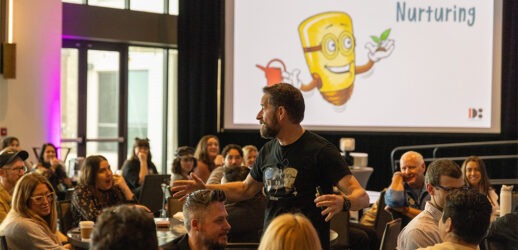How to get buy-in from executives, presenters and attendees
In our last column, we spoke with Kristi Sanders, CMM, director of Meeting Professionals International Academy, about different session formats designed to generate deeper learning. They do this by proactively drawing upon the intellect and experience of all session participants. The six formats we highlighted use a combination of specific presenter actions and attendees’ physical movement throughout the session. The goal of each format is the same: Maximize attendee engagement and uninhibited idea-sharing, followed by honest evaluation of each idea.
For these unusual session formats to work, however, planners must get buy-in from everyone involved: host organization executives, session facilitators and attendees. Here is advice Sanders offers on how address each stakeholder group.
Securing Executive Buy-In
In many instances, planners don’t have to go it alone when approaching their bosses to suggest using unusual session formats. Whenever a meeting is scheduled at a property that handles lots of business events, the conference sales and services staff at that venue has likely seen and contributed expertise to a wide spectrum of meeting objectives and individual session formats. As a result, the planner can engage these partners in choosing the right formats for a particular group’s business objectives, and for its demographics and personality.
What’s more, with an experienced venue manager able to vouch for the prior success of an unusual format, a planner builds credibility and confidence among executives who want maximum knowledge- sharing and ROI from the meeting.
It’s best to ease a group into using atypical formats. “Start small and conduct a few experiments you can control, then gather and present data from that,” Sanders says. For instance, new formats could initially be used in a single educational track of a meeting. Then, by comparing attendee feedback for that track to feedback from the previous year, and to attendee satisfaction with the other tracks at this year’s event, planners might have a compelling case for using unusual formats more extensively in the future.
To obtain that feedback, Sanders notes the easiest things to use are “smile sheet” surveys that ask participants: How strongly were you engaged? How much can you apply the session content to your work? Would you recommend to a colleague?
“It’s not the deepest type of feedback mechanism—but it gives executives a measure of progress in terms that they understand,” she says. “And if the scores are higher in the amount of ideas and learning gained by attendees, it tells the story for you.”
Gaining Presenter Buy-In
Despite industry consensus that most meetings should move away from sessions where the presenter acts as the primary focus, planners often still need to push session leaders to use formats where attendee participation is maximized.
“Be intentional and clear about the session formats you desire when you send out proposals,” Sander says. “Ask your top presenter prospects how they plan to engage people, and tell them what you have seen work with your group or among other groups you want to incorporate into your program.”
In fact, Sanders has added that requirement to calls for proposal for Meeting Professionals International’s 2018 World Education Congress. “Presenters must show us not just what they want to educate people about, but also how they are building a session where they will enhance the content through different methods of interaction,” she says.
She also provides descriptions of each unique format. Then they can decide which one would work best for their content. In a follow-up phone call with each presenter, Sanders tries to pin down the percentage of time a session will rely on straight presentation, question-and-answer format and peer-to-peer interaction. “It’s a coaching call before the event, to work through the engagement strategy,” she says. “We want to balance presentation with facilitation to draw out the deepest levels of knowledge.”
Obtaining Attendee Buy-In
These days, planners must create event-marketing materials that highlight sessions using unusual interactive elements that serve to maximize knowledge-sharing among attendees. Sanders points out that the educational experience can be promoted even without knowing the speaker or the precise topic.
“That’s because it is equally important for people to understand the specific journey they will take—they’ll be exposed to a wide variety of perspectives, but there’s also an expectation they will contribute ideas and experiences,” she says.
In addition, Sanders issues a “presenter-participant agreement” before the event and at the start of nontraditional sessions to gain further attendee buy-in. Created by Jeff Hurt, executive vice president of education and engagement for meetings consultancy Velvet Chainsaw, the agreement demonstrates 12 ways attendees have power over each session—including the power to leave if the session is not providing knowledge they want.
When all meeting stakeholders are prepared for the unique experience the host organization will deliver at an event, there’s a good chance the results will satisfy everyone involved.
Rob Carey is a business journalist and principal of Meetings & Hospitality Insight, a content marketing firm for the group-business market.




